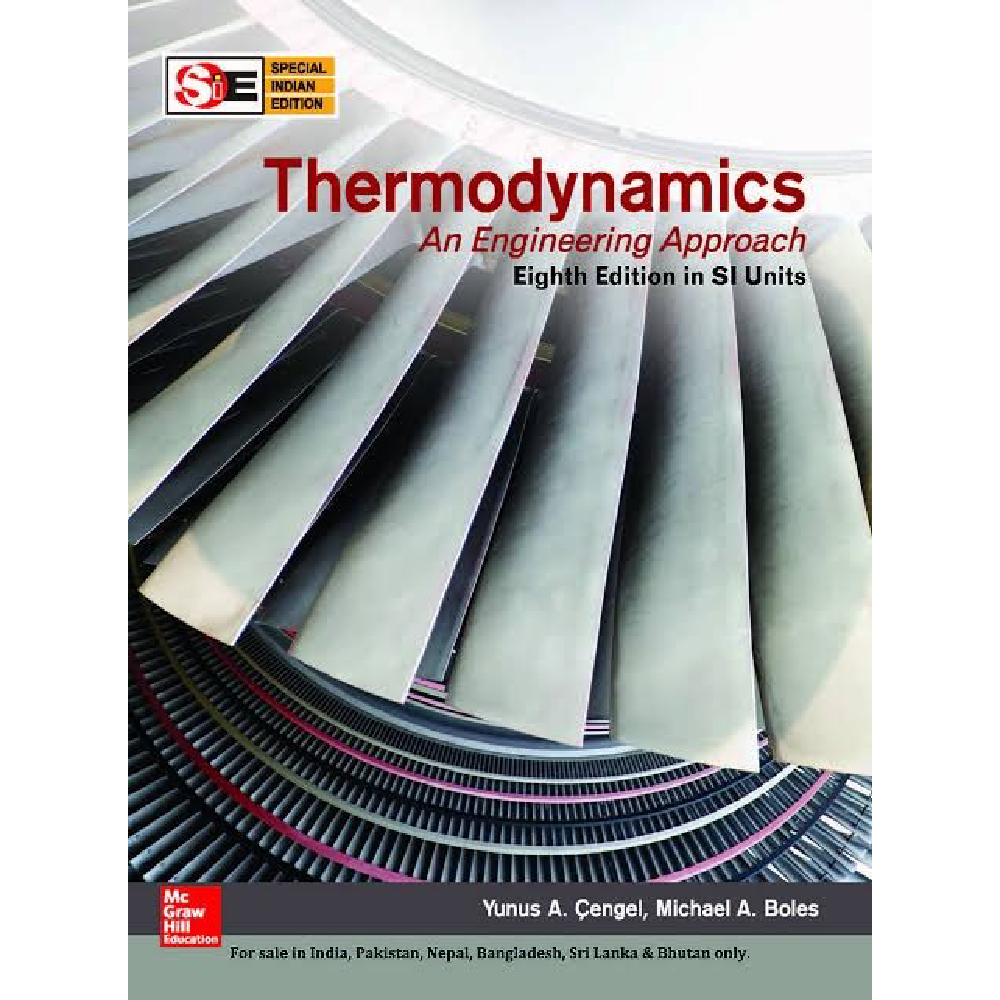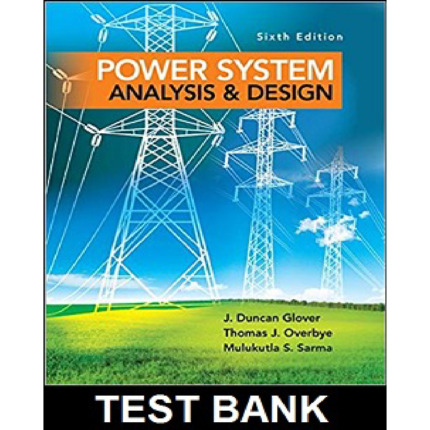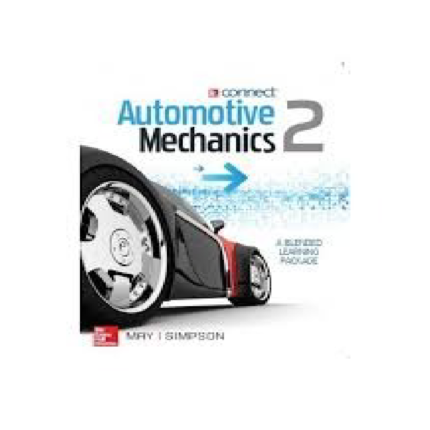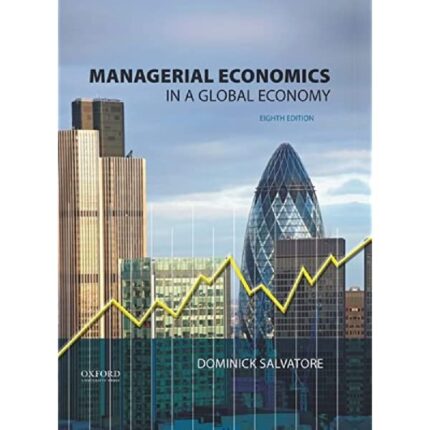Thermodynamics An Engineering Approach 8th Edition By SI Units – Test Bank
Chap11-1 Work input of a Carnot Heat Pump
Consider a heat pump that operates on the reversed Carnot cycle with R-134a as the working fluid executed under the saturation dome between the pressure limits of 140 kPa and 800 kPa. The refrigerant changes from saturated vapor to saturated liquid during the heat rejection process. The net work input for this cycle is
(a) 28 kJ/kg (b) 143 kJ/kg (c) 34 kJ/kg (d) 273 kJ/kg (e) 56 kJ/kg
Answer (a) 28 kJ/kg
Solution Solved by EES Software. Solutions can be verified by copying-and-pasting the following lines on a blank EES screen.
P1=800 “kPa”
P2=140 “kPa”
h_fg=ENTHALPY(R134a,x=1,P=P1)-ENTHALPY(R134a,x=0,P=P1)
TH=TEMPERATURE(R134a,x=0,P=P1)+273
TL=TEMPERATURE(R134a,x=0,P=P2)+273
q_H=h_fg
COP=TH/(TH-TL)
w_net=q_H/COP
“Some Wrong Solutions with Common Mistakes:”
W1_work = q_H/COP1; COP1=TL/(TH-TL) “Using COP of regrigerator”
W2_work = q_H/COP2; COP2=(TH-273)/(TH-TL) “Using C instead of K”
W3_work = h_fg3/COP; h_fg3= ENTHALPY(R134a,x=1,P=P2)-ENTHALPY(R134a,x=0,P=P2) “Using h_fg at P2”
W4_work = q_H*TL/TH “Using the wrong relation”
Chap11-2 Minimum Power input to a Refrigerator
A refrigerator removes heat from a refrigerated space at –10°C at a rate of 420 J/s and rejects it to an environment at 25°C. The minimum required power input is
(a) 420 W (b) 56 W (c) 588 W (d) 124 W (e) 371 W
Answer (b) 56 W
Solution Solved by EES Software. Solutions can be verified by copying-and-pasting the following lines on a blank EES screen.
TH=25+273
TL=-10+273
Q_L=420 “J/s”
COP_max=TL/(TH-TL)
w_min=Q_L/COP_max
“Some Wrong Solutions with Common Mistakes:”
W1_work = Q_L/COP1; COP1=TH/(TH-TL) “Using COP of heat pump”
W2_work = Q_L/COP2; COP2=(TH-273)/(TH-TL) “Using C instead of K”
W3_work = Q_L*TL/TH “Using the wrong relation”
W4_work = Q_L “Taking the rate of refrigeration as power input”
Chap11-3 MassFlowRate of R-134a of a Refrigerator
A refrigerator operates on the ideal vapor compression refrigeration cycle with R-134a as the working fluid between the pressure limits of 120 kPa and 800 kPa. If the rate of heat removal from the refrigerated space is 38 kJ/s, the mass flow rate of the refrigerant is
(a) 0.18 kg/s (b) 0.97 kg/s (c) 0.27 kg/s (d) 0.22 kg/s (e) 1.4 kg/s
Answer (c) 0.27 kg/s
Solution Solved by EES Software. Solutions can be verified by copying-and-pasting the following lines on a blank EES screen.
P1=120 “kPa”
P2=800 “kPa”
P3=P2
P4=P1
s2=s1
Q_refrig=38 “kJ/s”
m=Q_refrig/(h1-h4)
h1=ENTHALPY(R134a,x=1,P=P1)
s1=ENTROPY(R134a,x=1,P=P1)
h2=ENTHALPY(R134a,s=s2,P=P2)
h3=ENTHALPY(R134a,x=0,P=P3)
h4=h3
“Some Wrong Solutions with Common Mistakes:”
W1_mass = Q_refrig/(h2-h1) “Using wrong enthalpies, for W_in”
W2_mass = Q_refrig/(h2-h3) “Using wrong enthalpies, for Q_H”
W3_mass = Q_refrig/(h1-h44); h44=ENTHALPY(R134a,x=0,P=P4) “Using wrong enthalpy h4 (at P4)”
W4_mass = Q_refrig/h_fg; h_fg=ENTHALPY(R134a,x=1,P=P2) – ENTHALPY(R134a,x=0,P=P2) “Using h_fg at P2”
Chap11-4 Heat Supply by a Heat Pump
A heat pump operates on the ideal vapor compression refrigeration cycle with R-134a as the working fluid between the pressure limits of 0.32 MPa and 1.4 MPa. If the mass flow rate of the refrigerant is 0.25 kg/s, the rate of heat supply by the heat pump to the heated space is
(a) 7.6 kW (b) 31 kW (c) 26 kW (d) 39 kW (e) 49 kW
Answer (d) 39 kW
Solution Solved by EES Software. Solutions can be verified by copying-and-pasting the following lines on a blank EES screen.
P1=320 “kPa”
P2=1400 “kPa”
P3=P2
P4=P1
s2=s1
m=0.25 “kg/s”
Q_supply=m*(h2-h3) “kJ/s”
h1=ENTHALPY(R134a,x=1,P=P1)
s1=ENTROPY(R134a,x=1,P=P1)
h2=ENTHALPY(R134a,s=s2,P=P2)
h3=ENTHALPY(R134a,x=0,P=P3)
h4=h3
“Some Wrong Solutions with Common Mistakes:”
W1_Qh = m*(h2-h1) “Using wrong enthalpies, for W_in”
W2_Qh = m*(h1-h4) “Using wrong enthalpies, for Q_L”
W3_Qh = m*(h22-h4); h22=ENTHALPY(R134a,x=1,P=P2) “Using wrong enthalpy h2 (hg at P2)”
W4_Qh = m*h_fg; h_fg=ENTHALPY(R134a,x=1,P=P1) – ENTHALPY(R134a,x=0,P=P1) “Using h_fg at P1”
Chap11-5 Moisture Content of R134a after Throttling
An ideal vapor compression refrigeration cycle with R-134a as the working fluid operates between the pressure limits of 120 kPa and 1000 kPa. The mass fraction of the refrigerant that is in the liquid phase at the inlet of the evaporator is
(a) 0.65 (b) 0.61 (c) 0.38 (d) 0.50 (e) 0
Answer (b) 0.61
Solution Solved by EES Software. Solutions can be verified by copying-and-pasting the following lines on a blank EES screen.
P1=120 “kPa”
P2=1000 “kPa”
P3=P2
P4=P1
h1=ENTHALPY(R134a,x=1,P=P1)
h3=ENTHALPY(R134a,x=0,P=P3)
h4=h3
x4=QUALITY(R134a,h=h4,P=P4)
liquid=1-x4
“Some Wrong Solutions with Common Mistakes:”
W1_liquid = x4 “Taking quality as liquid content”
W2_liquid = 0 “Assuming superheated vapor”
W3_liquid = 1-x4s; x4s=QUALITY(R134a,s=s3,P=P4) “Assuming isentropic expansion”
s3=ENTROPY(R134a,x=0,P=P3)
Chap11-6 COP of a Heat Pump
Consider a heat pump that operates on the ideal vapor compression refrigeration cycle with R-134a as the working fluid between the pressure limits of 0.32 MPa and 1.4 MPa. The coefficient of performance of this heat pump is
(a) 0.80 (b) 1.2 (c) 6.2 (d) 4.1 (e) 5.1
Answer (e) 5.1
Solution Solved by EES Software. Solutions can be verified by copying-and-pasting the following lines on a blank EES screen.
P1=320 “kPa”
P2=1400 “kPa”
P3=P2
P4=P1
s2=s1
h1=ENTHALPY(R134a,x=1,P=P1)
s1=ENTROPY(R134a,x=1,P=P1)
h2=ENTHALPY(R134a,s=s2,P=P2)
h3=ENTHALPY(R134a,x=0,P=P3)
h4=h3
COP_HP=qH/Win
Win=h2-h1
qH=h2-h3
“Some Wrong Solutions with Common Mistakes:”
W1_COP = (h1-h4)/(h2-h1) “COP of refrigerator”
W2_COP = (h1-h4)/(h2-h3) “Using wrong enthalpies, QL/QH”
W3_COP = (h22-h3)/(h22-h1); h22=ENTHALPY(R134a,x=1,P=P2) “Using wrong enthalpy h2 (hg at P2)”
Chap11-7 Minimum Temperature of Gas (Air) Refrigeration Cycle
An ideal gas refrigeration cycle using air as the working fluid operates between the pressure limits of 80 kPa and 240 kPa. Air is cooled to 40C before entering the turbine. The lowest temperature of this cycle is
(a) –44C (b) 29C (c) 40C (d) -205C (e) -71C
Answer (a) –44C
Solution Solved by EES Software. Solutions can be verified by copying-and-pasting the following lines on a blank EES screen.
k=1.4
P1= 80 “kPa”
P2=240 “kPa”
T3=40+273 “K”
“Mimimum temperature is the turbine exit temperature”
T4=T3*(P1/P2)^((k-1)/k) – 273
“Some Wrong Solutions with Common Mistakes:”
W1_Tmin = (T3-273)*(P1/P2)^((k-1)/k) “Using C instead of K”
W2_Tmin = T3*(P1/P2)^((k-1)) – 273 “Using wrong exponent”
W3_Tmin = T3*(P1/P2)^k – 273 “Using wrong exponent”
Chap11-8 Power Input for a Gas (Helium) Refrigeration Cycle
Consider an ideal gas refrigeration cycle using helium as the working fluid. Helium enters the compressor at 100 kPa and –20°C and is compressed to 220 kPa. Helium is then cooled to 20°C before it enters the turbine. For a mass flow rate of 0.22 kg/s, the net power input required is
(a) 1.1 kW (b) 16.6 kW (c) 37.8 kW (d) 164 kW (e) 107 kW
Answer (b) 16.6 kW
Solution Solved by EES Software. Solutions can be verified by copying-and-pasting the following lines on a blank EES screen.
k=1.667
Cp=5.1926 “kJ/kg.K”
P1= 100 “kPa”
T1=-20+273 “K”
P2=220 “kPa”
T3=20+273 “K”
m=0.22 “kg/s”
“Mimimum temperature is the turbine exit temperature”
T2=T1*(P2/P1)^((k-1)/k)
T4=T3*(P1/P2)^((k-1)/k)
W_netin=m*Cp*((T2-T1)-(T3-T4))
“Some Wrong Solutions with Common Mistakes:”
W1_Win = m*Cp*((T22-T1)-(T3-T44)); T22=T1*P2/P1; T44=T3*P1/P2 “Using wrong relations for temps”
W2_Win = m*Cp*(T2-T1) “Ignoring turbine work”
W3_Win=m*1.005*((T2B-T1)-(T3-T4B)); T2B=T1*(P2/P1)^((kB-1)/kB); T4B=T3*(P1/P2)^((kB-1)/kB); kB=1.4 “Using air properties”
W4_Win=m*Cp*((T2A-(T1-273))-(T3-273-T4A)); T2A=(T1-273)*(P2/P1)^((k-1)/k); T4A=(T3-273)*(P1/P2)^((k-1)/k) “Using C instead of K”
Chap11-9 Minimum Heat Input for Absorption Refrigeration System
An absorption air-conditioning system is to remove heat from the conditioned space at 20°C at a rate of 85 kJ/s while operating in an environment at 35°C. Heat is to be supplied from a geothermal source at 140C. The minimum rate of heat supply required is
(a) 12 kJ/s (b) 35 kJ/s (c) 17 kJ/s (d) 58 kJ/s (e) 85 kJ/s
Answer (c) 17 kJ/s
Solution Solved by EES Software. Solutions can be verified by copying-and-pasting the following lines on a blank EES screen.
TL=20+273 “K”
Q_refrig=85 “kJ/s”
To=35+273 “K”
Ts=140+273 “K”
COP_max=(1-To/Ts)*(TL/(To-TL))
Q_in=Q_refrig/COP_max
“Some Wrong Solutions with Common Mistakes:”
W1_Qin = Q_refrig “Taking COP = 1”
W2_Qin = Q_refrig/COP2; COP2=TL/(Ts-TL) “Wrong COP expression”
W3_Qin = Q_refrig/COP3; COP3=(1-To/Ts)*(Ts/(To-TL)) “Wrong COP expression, COP_HP”
W4_Qin = Q_refrig*COP_max “Multiplying by COP instead of dividing”
Chap11-10 COP of a Refrigerator
Consider a refrigerator that operates on the vapor compression refrigeration cycle with R-134a as the working fluid. The refrigerant enters the compressor as saturated vapor at 140 kPa, and exits at 900 kPa and 70C, and leaves the condenser as saturated liquid at 900 kPa. The coefficient of performance of this refrigerator is
(a) 0.67 (b) 1.0 (c) 3.6 (d) 2.1 (e) 3.1
Answer (d) 2.1
Solution Solved by EES Software. Solutions can be verified by copying-and-pasting the following lines on a blank EES screen.
P1=140 “kPa”
P2=900 “kPa”
T2=70 “C”
P3=P2
P4=P1
h1=ENTHALPY(R134a,x=1,P=P1)
s1=ENTROPY(R134a,x=1,P=P1)
h2=ENTHALPY(R134a,T=T2,P=P2)
h3=ENTHALPY(R134a,x=0,P=P3)
h4=h3
COP_R=qL/Win
Win=h2-h1
qL=h1-h4
“Some Wrong Solutions with Common Mistakes:”
W1_COP = (h2-h3)/(h2-h1) “COP of heat pump”
W2_COP = (h1-h4)/(h2-h3) “Using wrong enthalpies, QL/QH”
W3_COP = (h1-h4)/(h2s-h1); h2s=ENTHALPY(R134a,s=s1,P=P2) “Assuming isentropic compression”













Reviews
There are no reviews yet.